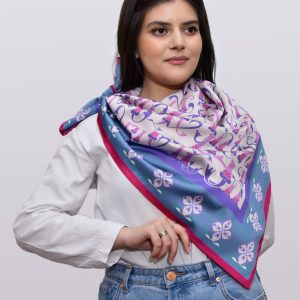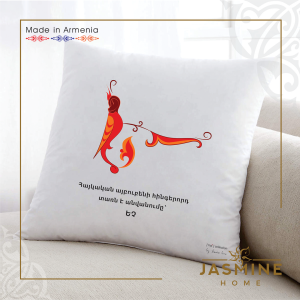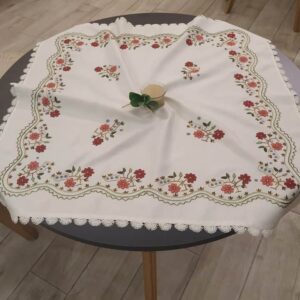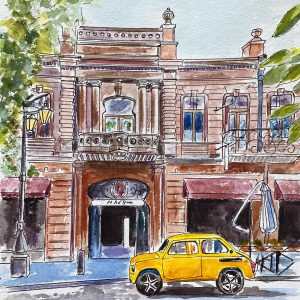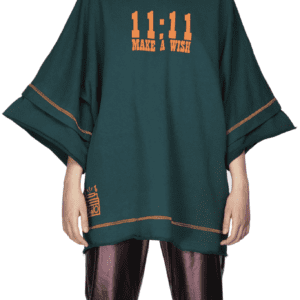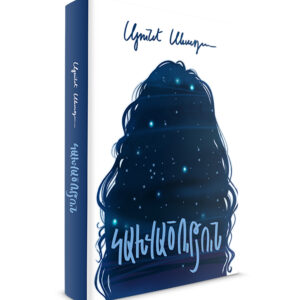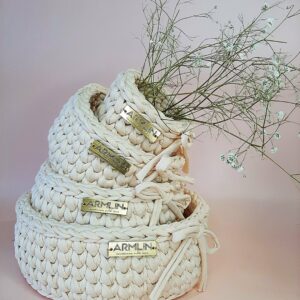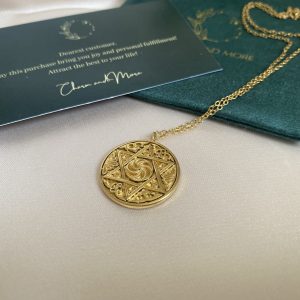-
Armenian Silk Scarf
Material: Silk
Colors: Blue , Milky
Weight (kg): 0.1 kg + 0.1 kg packing
Packing: has a box and a catalogue
Size (cm): 90 x 90
Product code: SS143$75.00$90.00Armenian Silk Scarf
$75.00$90.00 -
-
Cotton Tunic
Cotton tunic for all seasons, you can also wear it on sea season
$98.00Cotton Tunic
$98.00 -
Natural Merino Wool Scarf
Scarf is made of natural silk and 100% merino wool. It’s very light and soft.
Dimensions: 175x50cm
$70.00$75.00Natural Merino Wool Scarf
$70.00$75.00 -
Armenian Needlework
Armenian Ourfa Needlework for square table.
Net Weight: 0.09kg
Real Dimensions: 73cm x 73cm
$920.00Armenian Needlework
$920.00 -
-
Green Hoodie With Orange Prints
Dark Green Hoodie with orange prints
$61.00 -
Baskets Set – Elegant Organization for Your Home
A set of baskets for care items in a subtle color
➡️The collection includes: 4 baskets
✅You can order in your favorite color, shape and size ❤
▪︎ The order will be ready in 5-7 days
👉 ORDER NOW
$30.00 -
Melting ABSOLUT lamp
A blue light desk lamp made from Absolut vodka bottle and epoxy.
$30.00Melting ABSOLUT lamp
$30.00 -
Medieval Artsakh Eternity Necklace
Amulet inspired by medieval Artsakh dinasty Hasan-Jalalyans symbolics. A necklace combining the six point star and the Armenian sign of eternity represents a powerful fusion of spiritual elements. Six point star is a sign of protection, while the Armenian eternity sign, a timeless motif with interwoven loops, signifies everlasting life and prosperity. Wearing this amulet offers a sense of protection and a connection to heritage, as well as invoking positive energies for prosperity in one’s life.
$37.00 -
“Yerevan Love” Scarf
Inspired by the city of Yerevan and the love each and every Armenian feels for the city.
The history of Yerevan dates back to the 8th century BCE, with the founding of the fortress of Erebuni in 782 BCE by King Argishti I at the western extreme of the Ararat plain. Erebuni was “designed as a great administrative and religious centre, a fully royal capital.” By the late ancient Armenian Kingdom, new capital cities were established and Yerevan declined in importance. Under Iranian and Russian rule, it was the center of the Erivan Khanate from 1736 to 1828 and the Erivan Governorate from 1850 to 1917, respectively. After World War I, Yerevan became the capital of the First Republic of Armenia as thousands of survivors of the Armenian genocide in the Ottoman Empire arrived in the area. The city expanded rapidly during the 20th century as Armenia became part of the Soviet Union. In a few decades, Yerevan was transformed from a provincial town within the Russian Empire to Armenia’s principal cultural, artistic, and industrial center, as well as becoming the seat of national government.
With the growth of the Armenian economy, Yerevan has undergone major transformation. Much construction has been done throughout the city since the early 2000s, and retail outlets such as restaurants, shops, and street cafés, which were rare during Soviet times, have multiplied. As of 2011, the population of Yerevan was 1,060,138, just over 35% of Armenia’s total population. According to the official estimate of 2016, the current population of the city is 1,073,700. Yerevan was named the 2012 World Book Capital by UNESCO.[28] Yerevan is an associate member of Eurocities.$110.00





